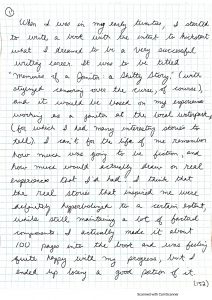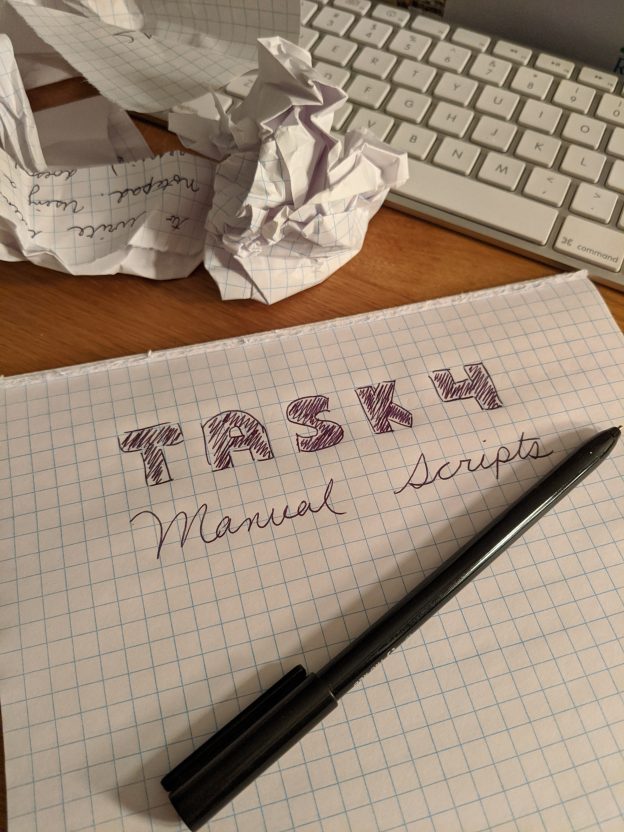A (Very) Brief Introduction
For this posting, I was tasked with creating a handwritten piece. To view the entirety of what I wrote (not just the first page, posted below), click here: Manual Script (Task 4)

My handwritten text exploring my past writing ambitions (scanned using CamScanner)
My Reflection
I found this handwriting task extremely easy to complete. By comparison, this typed reflection feels like pulling teeth. One of the things I appreciated about writing by hand (which I rarely do these days, as the majority of my communication is electronic) is that I needed to commit myself to the words on the page. I didn’t want to have large sections crossed out (which was the extent of my editing, as I wrote with pen rather than pencil), so I consciously took more time than usual thinking about what I was going to write. At the same time, I felt like I needed to be comfortable with whatever ended up on the page, for better or worse. I was forced not to look back and question what I’d previously written, but instead look forward as to how to connect that writing with the next thing I wanted to share. It was a freeing experience in that sense, not constantly worrying about how I could reword my last sentence. I’m the sort of person that will re-write the same e-mail (or grad school blog post) seven times over, painstakingly attempting to make the next iteration better than the last (hence the “pulling teeth” sentiment).
For me, that is one of the biggest differences between writing by hand and typing – with handwriting I am more committed to what I have written. It’s a bit slower to get each individual word out on the page, but that time also allows me to craft my thoughts more carefully the first – and hopefully only – time around. Unfortunately, handwriting can’t be disseminated as easily as digitally-typed text. As Harris (2018) pointed out in his podcast, contemporaries of Chaucer and Marco Polo didn’t actually get a chance to see their now-famous works because of – for lack of a better term – “distribution issues”. Likewise, though we can scan and photocopy handwritten texts, they aren’t as user-friendly for mass production and will likely need to be typed out for the sake of sharing (though some technologies are getting better at converting handwritten works to digital text). As much as I’d like to have the option of handwriting an e-mail to a parent and sending them a scanned copy, I don’t think it would be nearly as well-received as a typed version.
References
Harris, B. (Host). (2018, February 5). The Printed Book: Opening the Floodgates of Knowledge [Audio podcast episode]. In How it Began: A History of the Modern World. https://howitbegan.com/episodes/the-printed-book/
